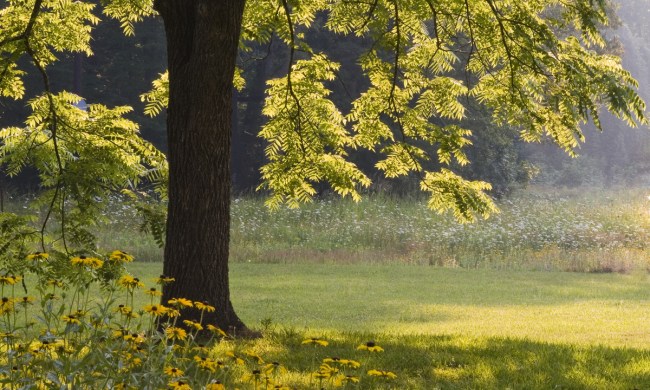As a newbie gardener, terms like plant hardiness zone, first frost date, and last frost date can get confusing or be overwhelming. Here we’re going to dive in to these terms and discuss why and how they affect you differently based on where you live. If you’re wondering when you can plant seeds in the ground or how to find out what zone you’re in, you’ve come to the right place.
What are the plant hardiness zones?
Almost every blog or video about plants will mention something called a plant hardiness zone or just zone. If you’re new to the gardening community or are just starting to get into the hobby deeper, you might be wondering what this means and how it affects your planting.
Simply put, the plant hardiness zones are mapped out regions based on seasonal temps, frost dates, the amount of precipitation, and other scientific measurements. For example, in Vermont, where there can be snow as early as October, the plant hardiness zone is mostly zone 4. This means Vermont has short growing seasons and longer winters. By comparison, southern California is between zone 8 and 9 and rarely reaches a frost point in some areas.
How does this affect gardening?
When shopping around for seeds, seedlings, or outdoor plants, you might have noticed a section on the tag where it mentions its hardiness zone. If you purchase a plant with a hardiness zone of 7 and you live in zone 4, you’re not likely to be successful in growing that plant outdoors. Again, there is a flip side to that. A plant with a hardiness zone of 2 will probably dry out and die in the heat of Arizona.
So while a higher hardiness zone does mean you have a longer growing season, it also depends on rainfall. Southern Texas can still grow plentiful veggie gardens with soil amendments and irrigation, but it’s much easier for Kentucky or Missouri with their longer growing seasons.
How to find out which zone you’re in
Finding out which zone you live in is as easy as Googling it. Type in “plant hardiness zone for” and use your zip code. That will bring up thousands of articles that can give you all the information you might need about your zone.
How to get a head start on growing seeds
If you live in a lower number zone like 1 through 5, you might be wondering how you could grow a garden with such a short growing season. This is where seed starting indoors and greenhouses come into play. By germinating your seeds indoors, you can get anywhere from a five- to eight-week head start while there’s still snow on the ground! In Ohio, which is zone 6, you can start tomatoes as early as the second week of February.
When to plant summer veggies in the ground
Now let’s talk about the last frost date. Because it’s the “start” of the growing season, the phrase “last frost date” can be a bit confusing. Again, let’s put it simply. Baby plants cannot withstand frost, so to avoid freezing these fragile little plants, you need to know when the last day of frost is possible. Meaning, on a specific date, the danger of frost within that zone is almost zero, and it’s safe to transplant seedlings into the ground and start planting other seeds, as well.
For example, many parts of Wyoming are in zone 4. The last frost date for that area is between April 24 and May 12. To be on the safe side, transplant tomatoes after May 12 to avoid frost. However, veggies such as kale could be fine going out anytime after April 24 since they don’t mind a light frost.
When to plant fall veggies in the ground
Lastly, let’s discuss the first frost date. It’s easy to see why this gets confusing, as the last frost date indicates the end of the growing season. However, this is when fall veggies such as beets, garlic, onions, and potatoes can be planted. Knowing the first frost dates allows you to know how many days of the growing season you have. Take the last frost date and the last frost date, and the dates in between are the length of your growing season.
For example, in zone 7, the last frost date is March 22 to April 3, and the first frost is October 29 to November 15. The number of days in between is 209 — so that’s your growing season if you’re playing it safe.
Why is knowing your growing season necessary?
In zone 5, the growing season is 166 days. When calculating if you have enough time to grow and harvest fruit from a plant, knowing your growing season will tell you the answer. It takes cucumbers 70 days to germinate, grow, and bear fruit. That means you can plant and grow cucumbers safely within zone 5. However, something like a melon or Brussels sprouts takes much longer, and you might be cutting it close with such a short growing season.
When it comes down to it, knowing the dates of your last and first frost and how many days there are in between is going to tell you what you can and cannot grow. Keep an eye out for hardiness zone labels on seed packs and plant tags, and you’ll be fine. If nothing else, you can give it a go and see how it turns out! The best part of gardening is trying new things, and failing just means you’ve learned something new.




